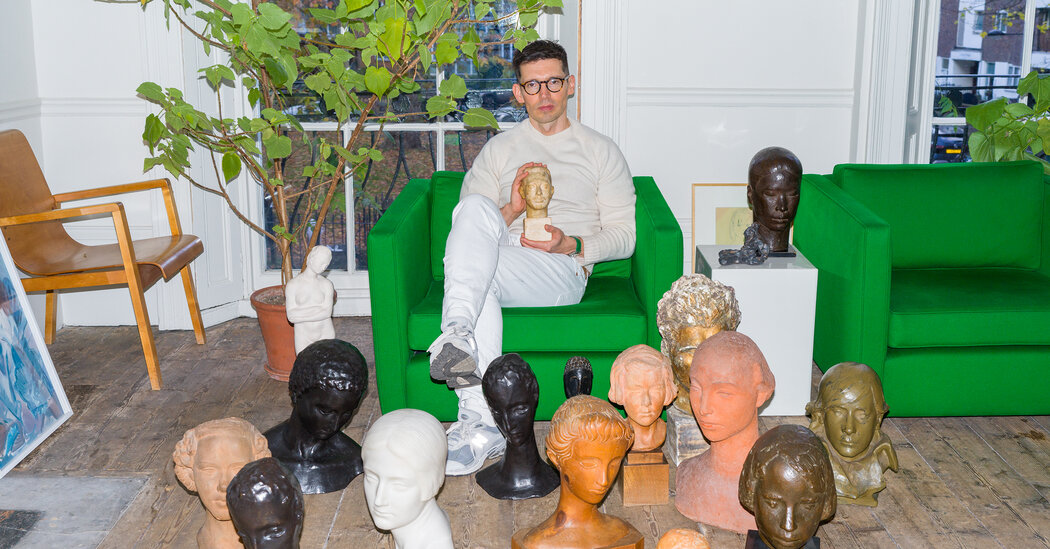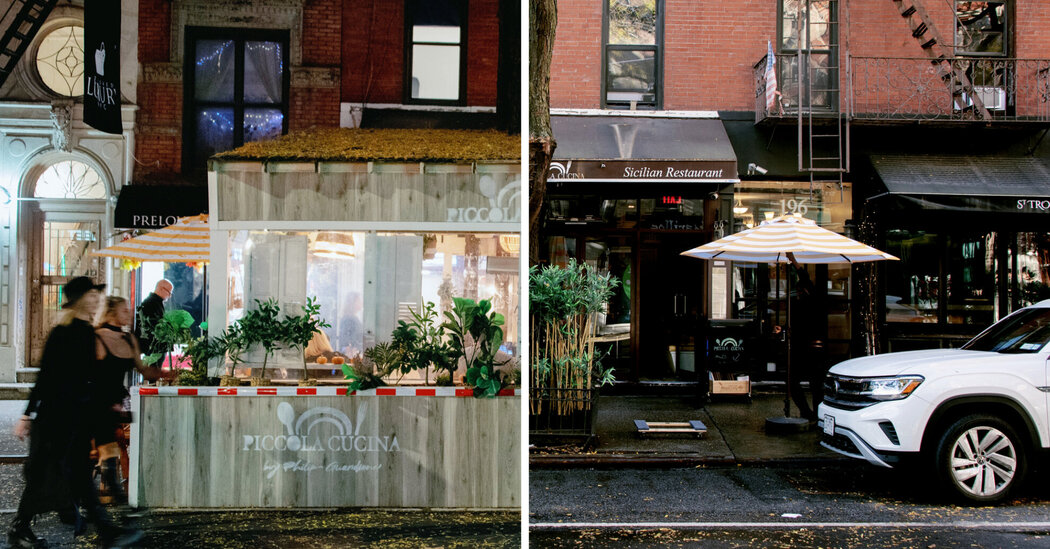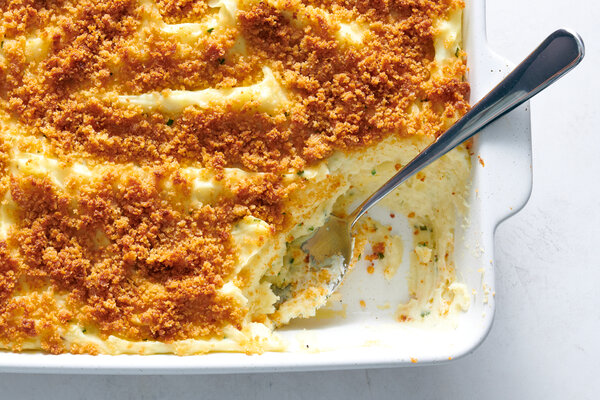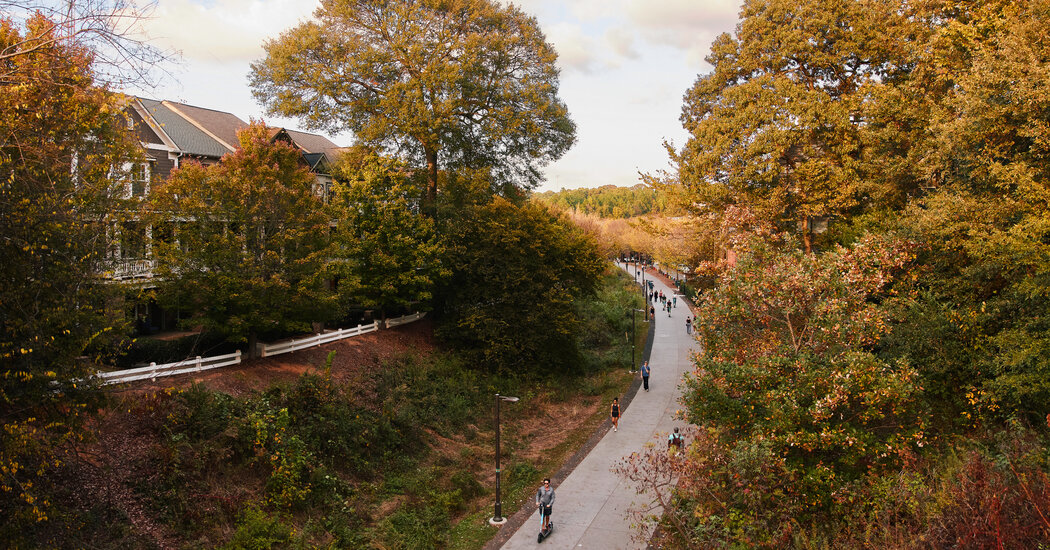About a year ago, Erdem Moralioglu’s husband, the architect Philip Joseph, 45, told him to stop buying busts. The British Turkish fashion designer, 46, didn’t listen — and has continued to populate their London home with figures purchased from flea markets and small auction houses. These “roommates,” as Moralioglu calls them, are situated among the couple’s portrait paintings (“The dourer and more melancholic,” he says, “the better”) and contemporary photographs by Rineke Dijkstra, Nan Goldin and Candida Höfer. Many of the busts are by unknown artists and share a common aesthetic: attenuated features and graceful lines. It’s no coincidence that Moralioglu — a purveyor of romantic silhouettes made from sumptuous fabrics — begins each design sketch with a face. “The pieces that I’m attracted to have a slight illustrative quality to them,” he says. “There’s a strange correlation between the way I draw and the way some of the busts look.”
The collection: Wood, plaster, terra-cotta, marble and bronze busts, between 10 and 18 inches tall, largely from the 1920s, ’30s and ’40s.
Number of pieces in the collection: About 25.
First purchase: A bronze bust by the German artist Wilhelm Lehmbruck, active during the 1910s. A contemporary of the Modernist Romanian sculptor Constantin Brancusi, Lehmbruck was best known for making elongated figures whose downcast eyes and bowed heads embodied the despair of wartime. “I bought it 12 or so years ago at a local auction in Newcastle, England,” he says. “Now I have four by him.”
Last purchase: “Every morning I go through my auction alerts. In October I bought an elegant 1920s marble piece by the Belgian sculptor Leon Sarteel. I have it next to an illustration from the same period; it looks almost like the sculpted version of the drawing.”
Least expensive: “A 40 euro wooden bust I bought at a market in France. The long-necked, long-nosed male figure resembles [an Amedeo] Modigliani painting in three dimensions.”
Weirdest: “An anonymous spray-painted plaster bust from the 1940s that I bought online. I was expecting a bronze, but maybe I didn’t look at the description properly.”
Most tragic: “A ceramic bust of a woman fell on its face, so now the end of her nose is chipped.”
Most precious: “A small, odd plaster bust of the American pianist Webster Aitken by the artist Jared French that once belonged to [the painter] Paul Cadmus. If my house were on fire, that’s the one I’d grab. He and Cadmus were part of the PaJaMa artistic collective in the 1940s, which I’ve always been fascinated by. I love that they were interested in creating scenes of magical realism, and that so many extraordinary gay artists and writers crossed paths with them.”
Most elusive: “I’d been looking for a specific example of Lehmbruck’s work for years. When I finally received it at the studio, I lugged it home on the tube. It does feel a bit like you’re carrying a human head in your bag.”
Other collections: “Victorian corsetry and issues of L’Officiel magazine from the 1950s. My obsessions with portraiture, busts and books are in the very fabric of me. If something is beautiful, I want to have it.”
This interview has been edited and condensed.







